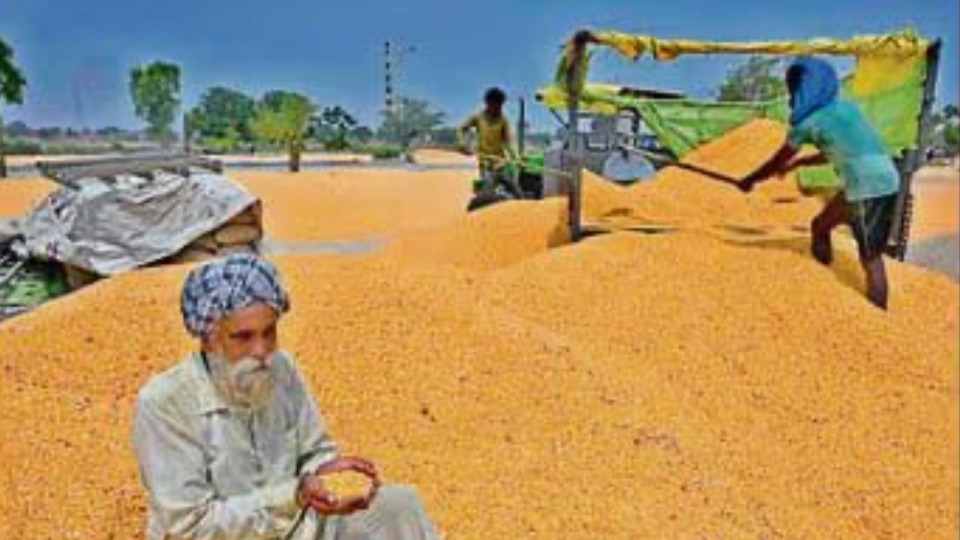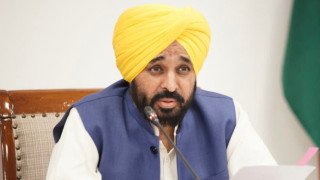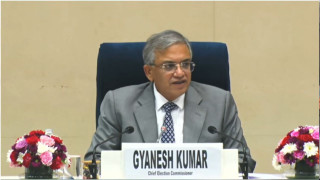
Punjab Achieves 16.27% Growth in Kharif Maize Area, Touches 1 Lakh Hectares (Image Source: TopIndianNews)
National News: The dream of “Rangla Punjab” is not just about making cities look beautiful, but about healing the soil and helping farmers grow stronger. For many years, farmers in Punjab were stuck in the paddy-wheat cycle. Heavy paddy farming not only lowered the groundwater to unsafe levels but also caused financial stress due to low income from traditional crops. The real answer to this issue was crop diversification. Seeing this as a chance for change, the Mann government began a wide campaign to move farmers from paddy to other crops that need less water, mainly maize.
Punjab has seen a record rise of 16.27 per cent in kharif maize cultivation. The total area has grown from 86,000 hectares in 2024 to 1,00,000 hectares in 2025. This is both an emotional and economic success for Punjab’s Crop Diversification drive. The maize movement shows that the Mann government’s policies have touched farmers’ hearts, inspiring them to move beyond old habits and choose a better future with crops that use less water. Every farmer joining this mission is not only protecting the earth but also giving strength to the new green wave of “Rangla Punjab.” Chief Minister Bhagwant Singh Mann has turned the challenge of diversification into a people’s movement.
In a review meeting, Agriculture and Farmer Welfare Minister Shri Gurmeet Singh Khudian checked the maize crop status and gave directions for smooth procurement. Under Chief Minister Mann’s leadership, Punjab has started a pilot project in six districts Bathinda, Sangrur, Kapurthala, Jalandhar, Gurdaspur, and Pathankot to convert 12,000 hectares of paddy land into maize. The project promotes crop diversification and groundwater saving. To motivate farmers, the government gives Rs 17,500 per hectare and has placed 185 Kisan Mitras to support them. Farmers joining the change can also get a subsidy of Rs 7,000 per acre, which will help around 30,000 farmers. According to the Agriculture Department, kharif maize was sown on 7,000 hectares or about 19,500 acres. Pathankot recorded the highest figure of 4,100 acres under the maize subsidy scheme for 2025-26, followed by Sangrur (3,700), Bathinda (3,200), Jalandhar (3,100), Kapurthala (2,800), and Gurdaspur (2,600). The total maize area across Punjab stayed nearly the same as the last season, at around 80,000 hectares or 1.98 lakh acres.
To make procurement easy, Minister Khudian has set up district-level committees with officials from the Agriculture Department, Punjab Mandi Board, and Markfed. He advised farmers to bring only dry maize to mandis for easy selling. Dr. Basant Garg, Administrative Secretary (Agriculture), said that moisture in maize should not be more than 14 per cent and told field officers to guide farmers for better market prices. The meeting was attended by Shri Ramvir (Secretary, Punjab Mandi Board), Shri Kumar Amit (MD, Markfed), Shri Jaswant Singh (Director, Agriculture), and other senior officers.
With maize growing on 14,000 hectares of new land, hope for positive change is rising. Every farmer shifting from paddy to maize is helping save groundwater and ensuring a better future for Punjab’s next generation. The Mann government is speeding up crop diversification and promoting water-saving crops like maize, which need less water and offer better profits than rice. This maize revolution shows that when the government ensures MSP and gives farmers financial safety with true intent, they are ready to take bold steps. This is Punjab’s big move toward freedom from paddy dependence, building a stronger and more balanced farming system. It proves that the government’s plans are working on the ground and that farmers are ready for change. When the government and farmers work together, success follows. The spirit of “Rangla Punjab” is now growing stronger with this new wave of green progress.













Copyright © 2025 Top Indian News
